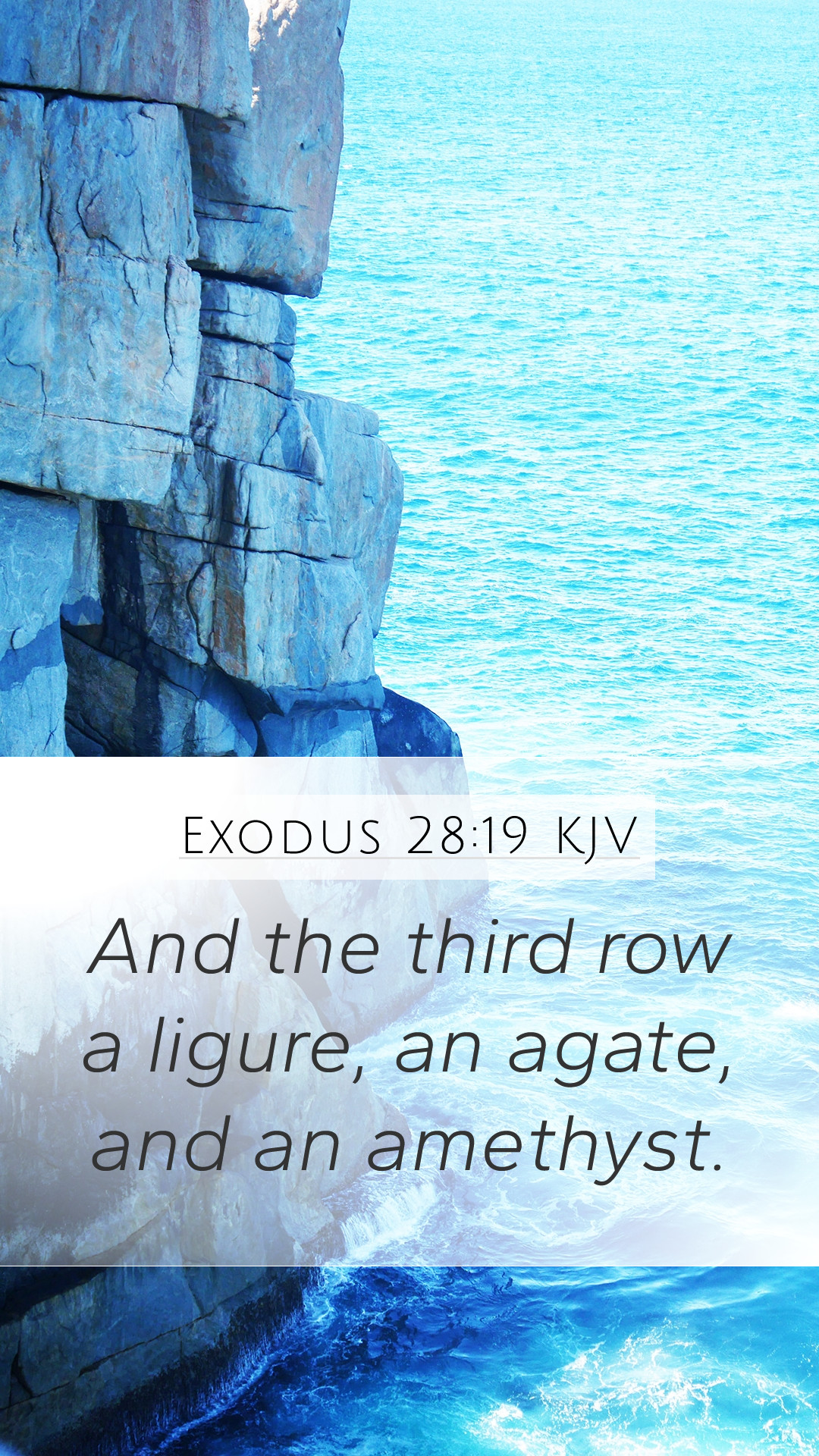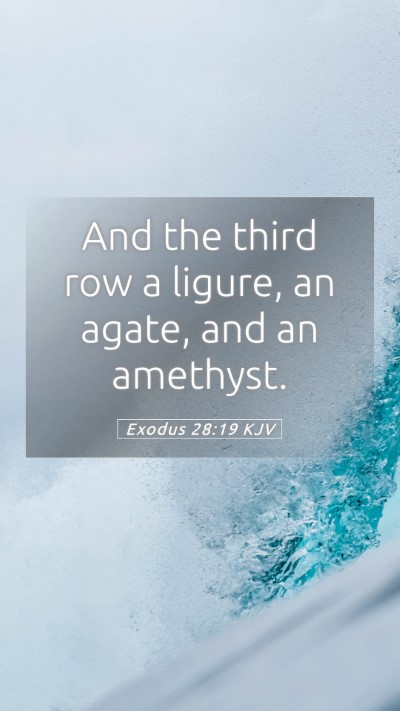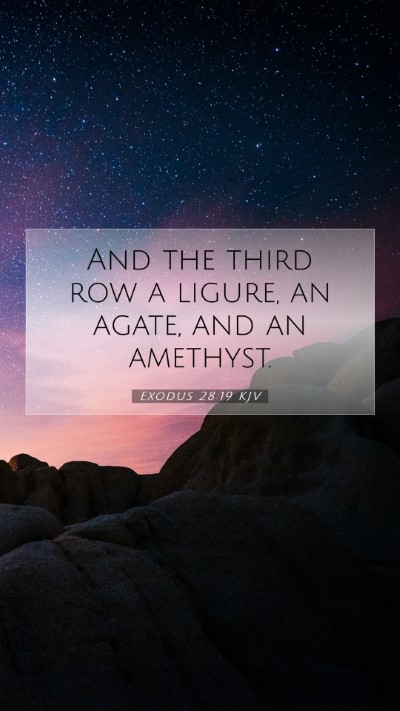Understanding Exodus 28:19
Exodus 28:19 presents an intricate aspect of the High Priest's garments, specifically focusing on the third stone in the breastplate. This verse contributes significantly to our understanding of the priestly duties and the symbolism imbued in the priest's attire.
Bible Verse Meaning
In Exodus 28:19, the verse states: “The third row shall be a jacinth, an agate, and an amethyst.” This verse completes the description of the gems set in the breastplate of judgment worn by the High Priest, Aaron. Each stone carries symbolic meaning and significance, reflecting the tribes of Israel and their representation before God.
Interpretation of the Verse
- Symbolism of the Stones: The three stones—jacinth, agate, and amethyst—are significant not only in their beauty but also in their representation of certain qualities. The jacinth is often associated with steadfastness, the agate with strength, and the amethyst with serenity and spiritual insight.
- Significance of the Breastplate: The breastplate itself symbolizes the importance of interceding on behalf of the people, showcasing the priest’s role as a mediator between God and Israel. Each stone represents one of the twelve tribes, reminding us of God's covenant with His people.
- Priestly Role: Aaron, as the High Priest, is depicted as bearing the names of the children of Israel on his heart, emphasizing the care and responsibility given to him in performing his sacred duties.
Commentary Insights
Scholars such as Matthew Henry explain that these stones symbolize the brightness of God's glory, indicating that the High Priest's ministrations are to glorify God as he carries the weight of the people’s names on his breastplate. Each gem serves as a reminder of God's promises and His unbreakable covenant.
Adam Clarke notes that the specific choice of stones was not arbitrary; rather, they hold astrological significance, resonating with the characteristics attributed to each tribe. This highlights the divine purpose in the selection, where every detail matters in the realm of God’s plans for His people.
Albert Barnes emphasizes the breastplate's role in judgment, stating that the stones were more than decorative—they were tools for divine guidance, illustrating how God would render decisions for the people through the High Priest.
In-Depth Study of Exodus 28:19
The detailed specifications of the breastplate reflect the seriousness of the priestly office and its preparation. Through this verse, we are reminded that understanding Scripture requires deliberate study and reflection.
Application to Daily Life
The call to don the spiritual armor, akin to the High Priest, encourages believers to continuously reflect on their responsibilities towards God and others, carrying burdens and interceding through prayer and action. As we explore this verse's meaning, it also serves as a reminder that we, too, are called to represent the divine in our daily lives.
Related Cross References
- Exodus 28:15-30: Description of the High Priest's garments
- 1 Peter 2:9: Believers as a royal priesthood
- Revelation 21:19-20: The foundations of the New Jerusalem as precious stones
Conclusion
Exodus 28:19 reflects not just an ancient practice but a profound theological concept that extends into modern Christian life. By examining the meanings of Bible verses through commentaries and personal study, we gain greater insight into how these ancient texts relate to our present-day faith journey.


